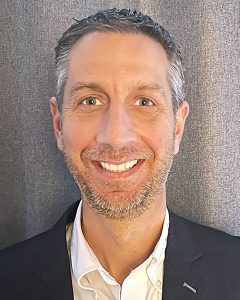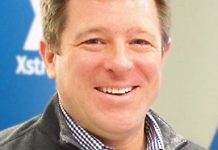
Tell us about yourself and Heraeus.
I have worked for Heraeus now for almost 14 years supporting customers with the design and build of infrared systems for thermal applications. Heraeus is a family-owned company that’s over 170 years old, and we are very proud of that. Heraeus has more than 13,000 employees with 12 business units including Heraeus Noblelight, which manufactures infrared and ultraviolet equipment. We are truly a global company and have manufacturing all over the world including North America. We design and build our own infrared heating products and UV products. Our North American head office is in Gaithersburg, Maryland, where we have manufacturing and testing capabilities. We supply many different industries and apply our infrared technology to many different applications. Our focus is on making sure we have the right equipment for the application and not just using something because it kind of fits.
Heraeus is constantly developing and looking at new products and new ways to do things, which is exciting to be a part of.
What are Heraeus Noblelight’s goals?
Heraeus Noblelight wants to continue to grow sustainably as a partner for infrared and UV technology in the global target markets. Our focus is on the development of customer-specific systems. We are continually investing in product and employee development. Not only do we see the need to be environmentally responsible, we also have a desire to use our resources wisely.
What sets Heraeus apart from other companies?
Heraeus is well known for its quality products, which results in more reliable equipment and less downtime for our customers. We are known for our experience. We are known for our flexibility, and we are known for our engineering and design capabilities. This is extremely beneficial for working on unique applications and developing new heating processes. We have the knowledge from working on many unique applications, and we are always looking for new and better ways to apply our technology. All of these attributes mean we can help our customers to have a better-quality product going out the door.
What tools do you use when working on a new heating application?
With infrared heating, testing is often required to properly design a system. We have a lab where testing can be done; we offer rental equipment where customers can use infrared modules and electrical controls at their location to prove out a process. We also run simulations such as ray tracing and computational fluid dynamics to aid in optimizing a design. These are all very effective ways to ensure the right technology is applied.
Where do you see infrared technology fitting into the changing energy landscape?
Infrared has been used for thermal processing for many years, and it is continually evolving. In manufacturing, infrared heating can be used for a variety of purposes such as preheating materials before processing, drying or curing coatings or adhesives, and welding components, just to name a few. Infrared heating can provide a quick and efficient way to heat materials without heating the air around them, which can reduce energy consumption and improve the efficiency of manufacturing processes. It can also provide a more precise and controllable form of heat, allowing manufacturers to target specific areas or materials for heating.
Based on the current challenges we are seeing in the energy market and the need to be more efficient, electric infrared is a great solution for thermal processing. We are seeing a push for more focused heating sources as well as higher output and more controllability. Faster heat up times and better temperature controllability means less scrap and lower overall costs.
We expect to see that demand for more focused heating and better control to be the main drivers in our development of new products and solutions.
What trends have you observed in the thermal-processing industry?
Regulations on the limitation of volatile organic compounds (VOC) have been in force for a long time, requiring coating manufacturers to use fewer solvent-based components. As companies make the switch to more environmentally friendly coatings and water-based products, the challenge is that often heating, drying, or curing the coatings requires more energy. Infrared is a very efficient way to increase the temperature quickly and shorten the ramp rate. With our instant on-and-off equipment and accurate temperature control, we can greatly reduce energy consumption.
We see this trend continuing and, therefore, see an increased demand for heating solutions.
Looking ahead, what are your expectations for the coming year?
I think it is important to focus on the positives that are happening, including a lot of manufacturing that is coming back to North America and the potential this brings. Thankfully, with our internal manufacturing capabilities, we are poised to grow using our knowledge to support customers for their heating applications.
MORE INFO www.heraeus-noblelight.com

























